Sanganer (Jaipur – Rajasthan)
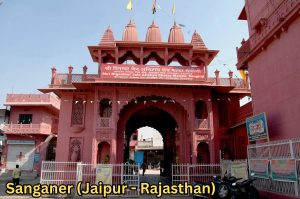 |
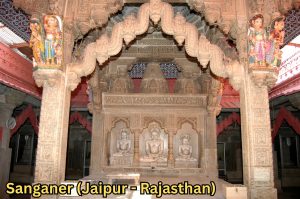 |
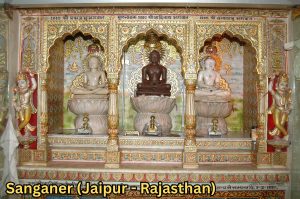 |
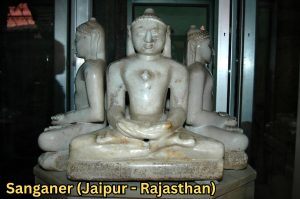 |
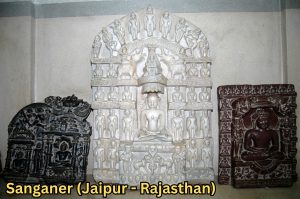 |
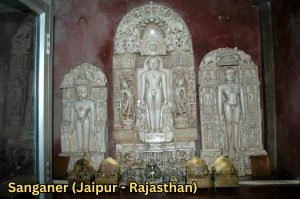 |
 |
 |
India is home to different cultures, religions, and monuments. And one of the religions is Jainism. There are several Jain temples dispersed across the country. However, if you chance to be in Jaipur, you are in luck since a magnificent Jain Mandir (the local name for temple, shrine, or any similar place of religious devotion) stands here.
Sanganer Jain Temple, also known as Sanghi Ji Temple, is a well-known tourist attraction in Jaipur. The red stones accentuate the design and sculptures of the whole temple edifice. Furthermore, the architecture of the main Gate transports you to another era.
The temple in its midst underground is accessible to only Digamer saints. He pulls out the idol from the temple for the worshippers for a limited time. It also contains a ‘Nij’ Mandir with three pinnacles, the center of which houses Parshwanath, who wears the seven serpent hood.
History of Jain Mandir Sanganer
The Shri Digamber Jain Temple in Sanganer is dedicated to Lord Adinath, also known as Rishabha. His Cross-legged statues frequently represent this personality, and he is one of the first of the 24 Tirthankaras.
According to Jain’s belief, a Tirthankara is an enlightened individual free of his negative karmas and whom others should try to follow.
Location of Jain Temple Sanganer
The temple stands near the Bus Stand, Shri Digamber Jain Mandir Athishay Kshetra, Jain Mandir Road, Dada Gurudev Nagar, Sanganer, Jaipur.
Architecture of Jain Temple Sanganer
The sheer height of this structure is an intriguing feature. Few nearby mandirs can compete with its towering height, as it stretches up to seven floors, giving it a commanding view of the surrounding area. Moreover, this gorgeous temple is built of reddish stone, as with any vital edifice near Jaipur, keeping the city’s reputation as a “pink-hued” one intact.
As per historians, the mandir was completed around the 10th century CE and is unquestionably one of the most beautiful architectural marvels, representing the Jain values and traditions.
The complexities of its wall carvings and the unwavering geometry of numerous sections have lured architects and artists back time and again. In addition, other spires rise directly from the main body of the structure. These are known as shikharas, and they are pretty beautiful to capture.
Historians and casual onlookers alike have noted that the temple shares many similarities with the architectural styles that inspired the development of the Jain Dilwara Mandirs at Mount Abu. The details and trim, as well as the fine lines, are unmistakably comparable. Moreover, the sculptures in both temples are equally magnificent and intricate.
Interestingly, the Dilwara temples were built a century to three centuries after the Jain Mandir of Jaipur, which is said to be a 10th-century structure. Whatever the rationale or connection between the two, it is evident that this is a temple worth visiting, like the famous Dilwara temples.
